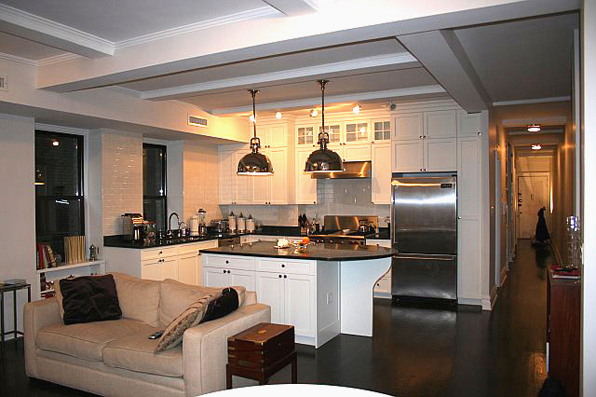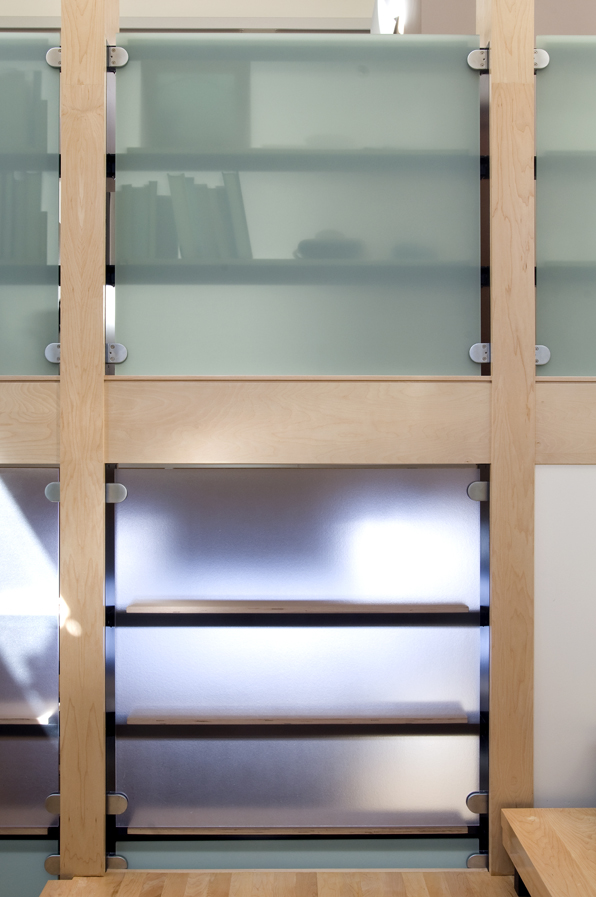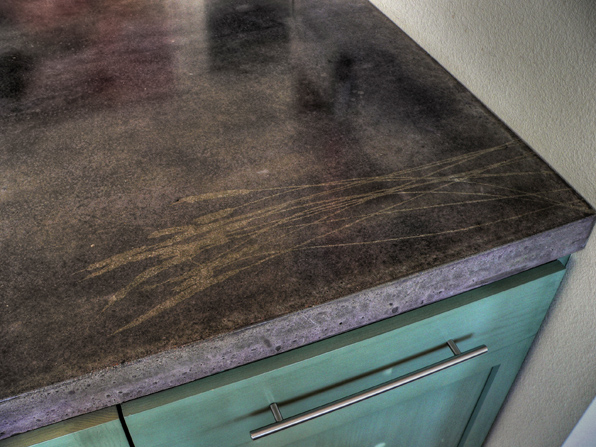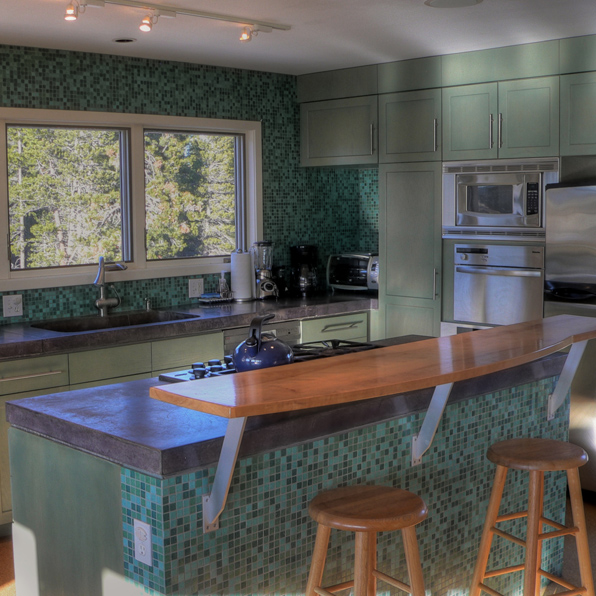interior design and architecture of a renovation of a pre-war apartment condo in New York City by M. Gerwing Architects
Nelson Algren fountain, Chicago, Illinois
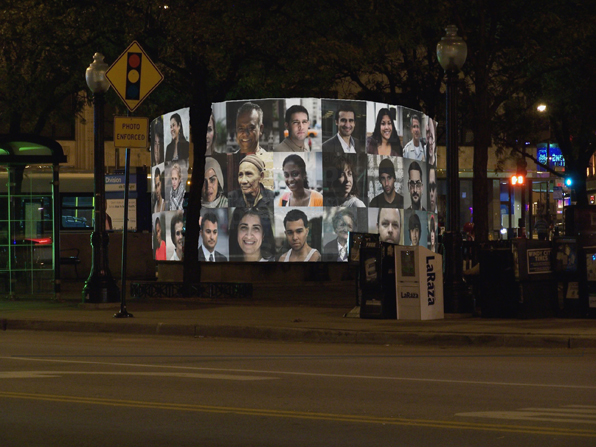 The project is to design and construct a temporary winter cover for the fountain and basin at the intersection of Ashland, Milwaukee and Division streets in Chicago. This fountain, named in honor of Chicago writer Nelson Algren, has sat with a deteriorating and unceremonious plywood cover for many years.
Our proposal here is to create a design that would be in the spirit of Algren’s gritty and realistic portraits of the immigrants, bartenders and hustlers of his northeast Chicago neighborhood – Wicker Park and Bucktown. We are proposing to construct a series of steel frames that can be mounted around the fountain basin and faced with portraits of the people of the neighborhood. Each year a day of photos will occur allowing anyone to participate and adding themselves to the fountain cover. Over time, the design will reflect the current and changing nature of the neighborhood and will champion the everyday working people of the city.
The project is to design and construct a temporary winter cover for the fountain and basin at the intersection of Ashland, Milwaukee and Division streets in Chicago. This fountain, named in honor of Chicago writer Nelson Algren, has sat with a deteriorating and unceremonious plywood cover for many years.
Our proposal here is to create a design that would be in the spirit of Algren’s gritty and realistic portraits of the immigrants, bartenders and hustlers of his northeast Chicago neighborhood – Wicker Park and Bucktown. We are proposing to construct a series of steel frames that can be mounted around the fountain basin and faced with portraits of the people of the neighborhood. Each year a day of photos will occur allowing anyone to participate and adding themselves to the fountain cover. Over time, the design will reflect the current and changing nature of the neighborhood and will champion the everyday working people of the city.
New York pre-war apartment renovation
 This projects was for a complete renovation of a pre-war apartment on New York’s Upper West Side.
This projects was for a complete renovation of a pre-war apartment on New York’s Upper West Side.
From the entry, a long, narrow hallway leads to the ‘back’ of the space, past the bedrooms. A series of cased, door-like openings was created to make an enfilade, compressing this space and projecting the entrant past the private areas of the project into the public rooms.
Pre-war details were revealed, and in many cases reinvented, to blend the old building with the new technology and materials of the new construction.
Designed by M. Gerwing Architects
Mark Gerwing, Project Architect
Builder: Neevon Spring
Spruce Court I
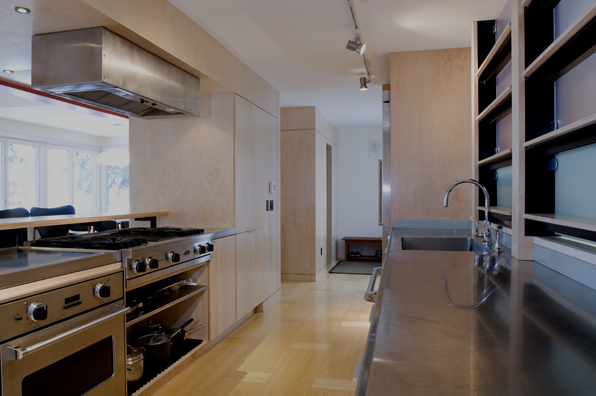 This project is a complete interior renovation of a 1970's condominium in Boulder, Colorado. A series of small, dark spaces separated by strange and ineffective light shafts was opened up to make a coherent, unified space that expressed the owner's live/work lifestyle.
This project is a complete interior renovation of a 1970's condominium in Boulder, Colorado. A series of small, dark spaces separated by strange and ineffective light shafts was opened up to make a coherent, unified space that expressed the owner's live/work lifestyle.
Relocating the stair into the space of the light shafts, the design brings light down into the middle of the house while simultaneously creating a mediator between the office and living spaces. The opened/closed sections of the stair alternately reveal and conceal the work and living spaces to each other.
Created with a number of clear, translucent and opaque resin panels, the stair is both the vehicle for the procession between living and working and the mediator between the two zones of the house.
Designed as Principal at Arcadea with Amy Kirtland Mark Gerwing, Project Architect Interior furnishings: Ulla Lange Design Builder: Purlin Construction Structural Engineer: Nicols & Associates
Nederland ridge house
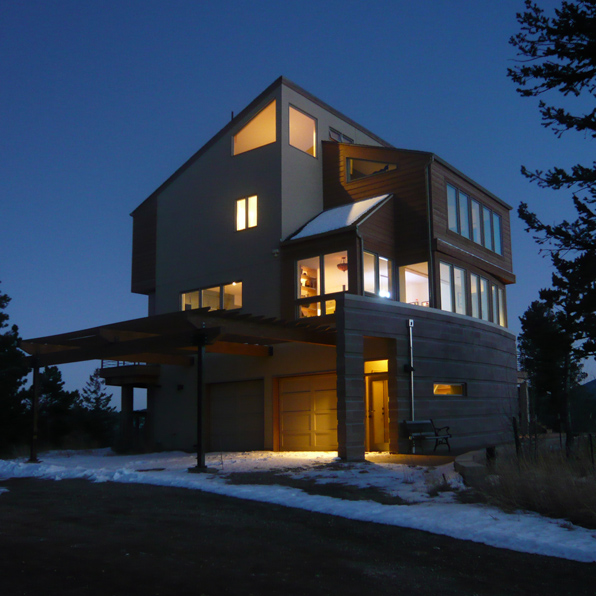 This project, located on a windy ridge outside of Nederland, Colorado started as a kitchen renovation and then grew to encompass the entire house including a complete re-engineering of the building's structure.
This project, located on a windy ridge outside of Nederland, Colorado started as a kitchen renovation and then grew to encompass the entire house including a complete re-engineering of the building's structure.
Battered by western winds coming off the Continental Divide, the existing 3 ½ story house shook violently and had begun to tilt away from wind. In an effort to solve this problem and address the lives of the owners, the new design solved the structural issues and re-conceived the interior landscape of the house. By removing interior walls and adding exterior walls and supports, the house became a unified whole and a pr otecti ng exo-skeleton for the growing family.
A large, curving masonry wall was built on the west side to support the house and deflect the winds. The new wall also establishes a series of new windows which allow light and the view to pervade the entire living, dining and kitchen spaces.
Designed with James Walker Mark Gerwing Project Architect Builder: Cottonwood Custom Homes Structural Engineer: Jon X. Giltner Photograpy: Tim Murphy and James Walker
Mine the Gap
In 2010 the Chicago Architectural Club held their semi-annual Chicago Prize Competition. Entitled "Mine the Gap", the site of the competition was the gigantic excavated foundation for the failed Chicago Spire project located on Lake Shore Drive directly adjacent to Lake Michigan. The competition asks for submissions that envisaged a new use for the site and a not-too-subtle critique of the real estate developer/speculator process for making cities.

I lived in Chicago after grad school and I have an abiding love and appreciation for the place and its architecture. I also quite enjoy taking part in competitions when the time allows and if the project is sufficiently compelling. So when this came around I thought I would throw my hat in the ring. And then life and work intervened, diverting any excess time and energy from competitions and almost all other activities. Then deadline for submission came and went and I had no more than some thoughts and notions about the site and the emotionally-loaded content. It was afterall a competition that placed failure at its core in the middle of the worst building environment in my lifetime.
However, even if the deadline had passed and winners announced, I kept thinking of the huge hole in the ground surrounded by a thriving city. And as often happens to us architects, notions and thoughts turn into drawings and models and project comes forth.
The project is really just a huge timepiece, a Foucault pendulum slowly ticking off the days and weeks and years and decades. It tells time by standing still as the earth is moving. Somehow this seemed an appropriate comment, if not a bit post-apocalyptic, on the construction of cities and the cycle of time.
I think it is of some amusing irony that I made a project for a competition that was over, a building without a client, for a site without a building.






